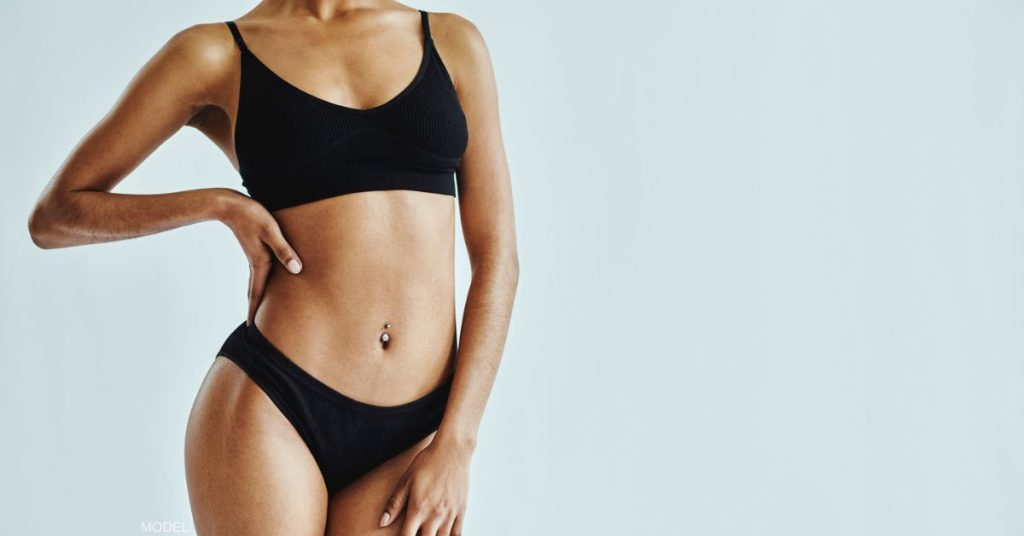Implants aren’t the only way for women to enhance the size and shape of their breasts. In fact, breast augmentation with fat transfer uses the patient’s own body fat to achieve subtle, natural-looking results.
How does this “natural breast augmentation” compare against synthetic options? We break down fat transfer breast augmentation vs. implants to help you decide which breast enhancement option will help you achieve your aesthetic goals.
Fat Transfer Breast Augmentation
Breast augmentation with fat transfer involves two distinct phases. First, the patient’s fat must be harvested from a “donor site”—an area such as the belly, thighs, or buttocks with “pinchable” fat that can be removed via liposuction.
During liposuction, a cannula breaks up fat deposits and suctions them out. Once the fat has been collected, it is put through a centrifuge to filter out any blood or impurities. The refined fat can then be injected via tiny incisions on the breasts.
Your board-certified plastic surgeon can use autologous fat to subtly enhance the breasts’ shape and size for superior, natural-looking results. However, the size increases tend to be modest, rarely increasing the breasts by more than one cup size.
Breast Augmentation With Implants
In traditional breast augmentation, your plastic surgeon will work with you to determine the type of implants that will give you the breasts you desire. Implants are highly customizable, giving women countless options to achieve their ideal breasts.
In addition to choosing their implant size, breast augmentation patients also get to determine the shape of their implants—do they want to maintain their anatomical teardrop (bottom-heavy) breasts or get round implants that add fullness all over?
Implant type is another important consideration. Silicone gel implants tend to feel more natural, while saline implants can be inserted laparoscopically in a minimally-invasive procedure. To learn more about the differences between implant types, please read our related blog post.
Why Should You Choose Fat Transfer Breast Augmentation Over Implants?
Fat transfer breast augmentation may produce more subtle increases in volume than implants, but the procedure does offer several benefits, including:
- All-natural – Patients concerned about placing a foreign, synthetic object into their bodies can choose to enhance their breasts naturally.
- No maintenance – Although breast implants are generally very safe, they may rupture or leak, and will eventually need to be replaced. Concerns about bio-incompatibility are also alleviated with autologous fat transfer.
- Long-lasting – While breast implants don’t “expire,” they aren’t meant to be lifetime devices. Most women will exchange them for quality control reasons (or personal preference) every 10-15 years. With autologous fat transfer, so long as you maintain a stable weight, your cosmetic results can be preserved indefinitely.
- It benefits other areas of the body – One secondary advantage of fat transfer breast augmentation is that stubborn body fat is repurposed to supplement breast volume. Not only can patients enjoy shapelier breasts, they can also enjoy a trimmer figure!
Fat transfer breast augmentation produces soft, natural-looking results that offer some advantages over traditional implants. However, it’s not always the best fit for every patient. Implants can produce more robust results and dramatic changes—see for yourself in our before and after photo gallery! If you are interested in learning more about augmenting your breasts theall-natural way, please request a consultation or call us at (770) 421-1242 to get in touch.


Leave a Reply